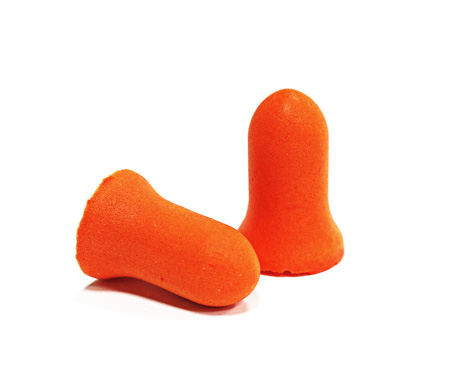Earplugs are commonly used in the workplace to help protect the user's ears from excessive noise and can also be used to protect workers' ears from water, foreign objects, dust or strong winds.
Unlike earmuffs, earplugs at work are inserted into the ear canal and provide better hearing protection; making them a good choice for extreme noise areas. They are also smaller, which means they are easier to wear with other personal protective equipment such as goggles and helmets.
Under the law, employers must assess noise risks in the workplace and determine measures to eliminate or reduce exposure to noise risks in order to protect employees' hearing. The protective measures chosen should reflect the degree of risk.
While there are many ways to reduce noise in the workplace, such as choosing quieter equipment, using engineering controls such as silencers, and moving workplaces to keep noise further away from workers; noise cannot be completely eliminated, and that's where hearing protection like earplugs at work come into play.

Everyone's ear canal is individual and so must be their hearing protection. It is important to have the right fit and the right protection and to make sure the user understands how to use and maintain their earplugs.
-Selecting earplugs for the particular noise hazard
Consider the frequency, pitch and intensity of the noise hazard. As an example, in industries such as mining, workers may be exposed to very low frequency noise.
-Selecting earplugs for your industry
Music, construction and airport workers are exposed to different kinds of noise and therefore have different requirements for earplugs at work. In food and beverage factories, earplugs are conspicuously colored so that they can be easily found if they are accidentally dropped. There are many earplugs designed specifically for musicians to hear the full range of frequencies, and special earplugs for use during firearms practice.
-Making sure you meet requirements, standards, certification and legislation
As with any personal protective equipment you purchase, earplugs at work should meet the requirements of international standards and relevant legislation. the CE mark, EN, ISO and BS codes indicate which devices meet the standards for safety, design and performance.
Conclusion
As with all personal protective equipment, make sure you consider a variety of factors when choosing a product for your employees. Here is a summary of the key things to consider when applying earplugs at work:
1.Make sure you control the risk effectively, taking into account the task and the environment. Consider the correct level of attenuation, the level, frequency and pitch of the noise hazard.
2.Don't overprotect. Cutting back too much noise can lead to isolation, or to a reluctance to wear protectors. Make sure workers can safely hear the alarm and that they can still communicate effectively.
3.Make sure the earplugs are comfortable and appropriate for the work environment. Also consider how hygienic the earplugs are, whether they are to be worn with other protective equipment, and how they are adapted to the user's activities.
4.Make sure workers are wearing ear protection at the right time - whenever a noise hazard exists. Workers need to know when and where to wear earplugs at work.
5.Earplugs are properly maintained and in good, clean and undamaged condition.
Copyright © Hebei Sinotools Industrial Co.,Ltd. All Rights Reserved | Powered by  Sitemap
Sitemap